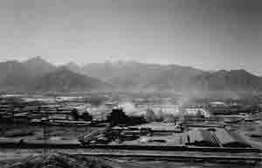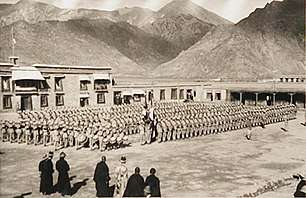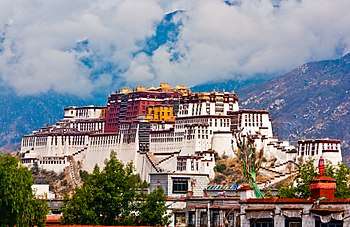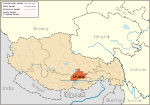Drapchi Prison




Drapchi Prison, or Lhasa Prison No. 1 (Tibetan: གྲྭ་བཞི་, Wylie: grwa bzhi , lit."four corners"; simplified Chinese: 拉萨第一监狱; traditional Chinese: 拉薩第一監獄), is the largest prison in Tibet, China, located in Lhasa.
Originally built as a Tibetan military garrison, Drapchi was transformed into a prison after the 1959 Tibetan uprising.[1]
It officially opened as a prison in 1965 and consists of a series of nine units and has recently been expanded and restructured. It has an estimated population of 1000 of which some 600 are thought to be political prisoners ranging in age from 18 to 85 many of which are captured monks and nuns.
According to Central Tibetan Administration, the prison has gained a notorious reputation and is feared by the Tibetans due to its strong management. Reports of brutality have been alleged by Tibetan exile groups.[2]
In November 1994, 13 nuns were sent to Drapchi to serve a 5-year sentence for endangering state security by protests against the Chinese rule in Lhasa. In April 1996, all the inmates of Unit 3 of Drapchi prison, consisting of nearly 100 female political prisoners, went on a hunger strike in protest of their treatment. The week-long strike caused the prison officers some concern that it might damage the reputation of the prison further if the inmates died as a result and promised an end to the brutality.[3]
See also
References
- ↑ Staff. "Drapchi Prison : Tibet's Most Dreaded Prison: An Insight into Drapchi Prison: History of Drapchi Prison". Tibetan Centre for Human Rights and Democracy. Archived from the original on 2010-02-23. Retrieved 2010-02-03.
- ↑ Political Prisoners Archived September 3, 2007, at the Wayback Machine.
- ↑ "Testimony given by Passang Lhamo, Tibetan nun and former political Prisoner, to the U.S. Congressional Human Rights Caucus". Government of Tibet in Exile. May 6, 2002. Archived from the original on August 19, 2007. Retrieved September 23, 2008.
External links
- 29°40′11″N 91°08′11″E / 29.6698°N 91.1364°ECoordinates: 29°40′11″N 91°08′11″E / 29.6698°N 91.1364°E
- History of Drapchi Prison

